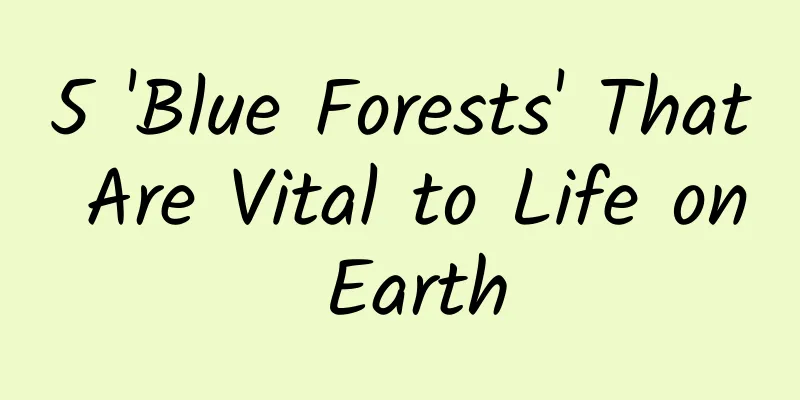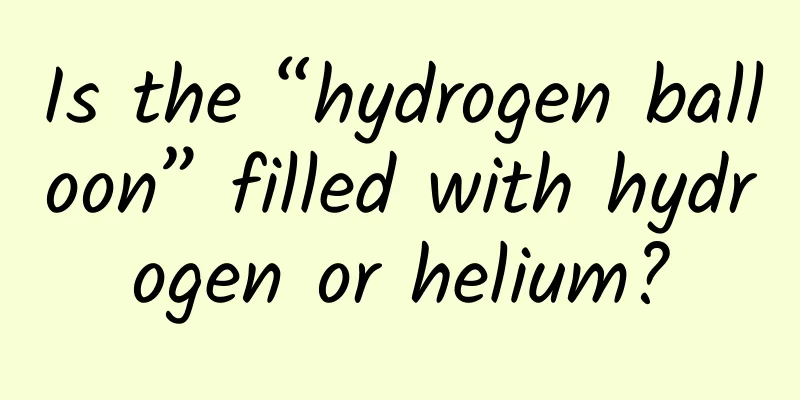5 'Blue Forests' That Are Vital to Life on Earth

|
Translator's note: Forests not only grow on land, but also in the water. Today, the translator will take you to the forest in the water. When you think of forests, you probably conjure up images of trees towering above you and leaves crunching underfoot. But there are some very different forests — in and under water — that are just as beautiful and just as valuable. While they're not all trees, these "blue forests" are essential to life on Earth, experts say. “They protect our coastlines from flooding and erosion. They provide refuge for wildlife and sustain communities with sustainable livelihoods. We are only beginning to understand how important ‘blue forests’ are to keeping Earth’s climate stable, and they are also incredibly fragile. We need to cherish and protect these vital resources,” said Leticia Carvalho, Head of Marine and Freshwater Ecosystems at the United Nations Environment Programme (UNEP). Here are five of the most important "blue forests". 1. Mangroves Mangroves are salt-tolerant trees and shrubs that grow along the coast. They provide a breeding ground for rich biodiversity and a sanctuary for fish and crustaceans. Mangroves are also a form of natural coastal defense against storm surges, tsunamis, rising sea levels and erosion. Research by the United Nations Environment Programme shows that mangrove ecosystems support local economies by supporting fisheries, providing other food sources and protecting coastlines. Each hectare of mangroves is estimated to be worth $33,000-57,000 per year. They extract five times more carbon from the atmosphere than forests on land. However, mangroves are disappearing at a rate three to five times faster than global forest loss. It is estimated that mangrove cover has halved in the past 40 years. In Kenya and Madagascar, UNEP is helping communities recognize the value of mangroves for carbon storage, coastal protection and livelihoods. Countries such as Cuba and Pakistan have also pledged to protect and restore their mangroves. 2. Salt marshes Salt marshes are found in bays and estuaries along tidal coasts in low-lying, temperate regions of the world. They are important nesting and feeding sites for birds, and their shallow, brackish waters provide shelter for fish, molluscs and crustaceans. Research shows that salt marshes, along with mangroves, peatlands and seagrass beds, store more carbon than all the world’s terrestrial forests combined. 3. Seagrass meadows Seagrasses are marine flowering plants found in shallow waters from the tropics to the Arctic Circle. Seagrass meadows protect coasts from erosion, store carbon, and contribute to food security by helping to produce healthy fish stocks. Seagrasses are a powerful, nature-based solution to climate change and although they cover just 0.1% of the seafloor, they store around 18% of the ocean’s carbon. They have recently been discovered to filter microplastics, helping to protect our waters from harmful pollution. But an estimated 7% of seagrass habitat is disappearing each year, the equivalent of losing an area the size of a football field every 30 minutes. 4. Rockweed Dunaliella consists of several species of macroalgae, identifiable by their air-filled sacs that enable them to float upright at low tide. While people have recognized the value of Dunaliella for centuries—it is a staple food and it is a primitive source of iodine—it is now being recognized as a sustainable resource with great economic potential as part of the blue economy. Commercial projects like Dunaliella cultivation can create new economic opportunities, especially for women in rural communities. 5. Kelp forests Kelp forests grow in cold, clear waters and can sometimes grow up to two feet in a day. Pollution and overfishing are threatening these ecosystems, but like Dunaliella, their commercial value is being recognized as part of a sustainable blue economy. Kelp forests are now being sustainably used for medicine, food, industry, animal feed and to fertilize farmland. Kelp and other species of algae do not require fertilizer to grow, just sunlight, carbon dioxide and water. Original link: https://www.unep.org/news-and-stories/story/5-blue-forests-are-vital-life-earth Translated by YJ Reviewed by Daisy |
<<: Are you type A or type B? If you are the former, take care of your heart
>>: Do collagen supplements really work?
Recommend
Brand Communication Perspectives for 2022
As long as it involves business, there will be ma...
Moji Weather is about to go public. How far can Moji, which makes 99% of its profits from advertising, go?
The business model of tool products has always be...
How can you get more people to participate in your activities?
When running events or conducting marketing activ...
Query the price of Artair Real Estate Mini Program agent. How much is the price of Artair Real Estate Mini Program agent?
How much does the Ateler Property Agency Mini Pro...
Are ants supporters of "feminism"? What is the real ant society like...
Ants are one of the most fascinating social biolo...
After watching ofo’s new ad, I threw away the client’s brief!
Recently, ofo, the shared yellow bike company, re...
Look! The sun is also "drawing"? It once caused power failure!
Recently, Nature announced the best scientific ph...
The latest policy on death allowance for only children in 2022: How much is the one-time subsidy?
In May 2022, the Ministry of Finance issued a noti...
5 key points to detail the user growth methodology!
Before doing product operations and promotion wit...
Favor + benefit, "borrowing electricity" from Wei, Xiaoli and Li Auto, Lei Jun and his Xiaomi Motors made another good move
There are no eternal rivals in the automotive ind...
Regarding travel during the Mid-Autumn Festival! The Ministry of Culture and Tourism issued a reminder
The 2024 Mid-Autumn Festival holiday is approachi...
Common mistakes in keyword selection for the App Store
In the process of mobile game or mobile applicati...
100-Hour Rule
[[157983]] You may have heard of the 10,000-hour ...
Are you more likely to be struck by lightning if you use your cell phone or wear metal jewelry during a thunderstorm? 6 flood prevention rumors, all explained
We have now entered the flood season, and many pl...
With a loss of 40 million every day and 86 billion in 6 years, where did NIO, which has yet to make a profit, spend all its money?
Recently, there has been a sudden increase in deb...









